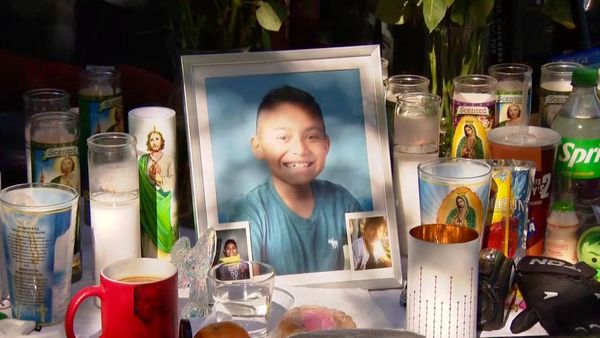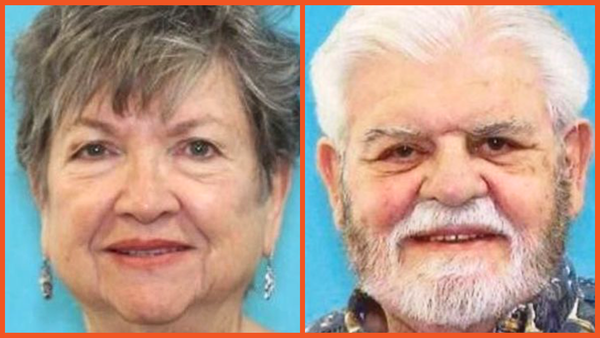
For almost two decades Tina has enjoyed early morning walks through Windsor Great Park’s ancient-oak studded open fields with the freedom to let her dog off the lead.
In recent weeks, however, she has noticed disturbing changes: fencing appearing around her regular route near Cranbourne Gate, trenches being dug, hedges planted and CCTV cameras erected.
Last week she saw three men carrying a “no public entry” sign. “So, I walked up to them and said: ‘Oh, are you going to close this area?’ And one guy sticks the sign behind his back, and said: ‘We’re just checking the size of the sign for somewhere else.’ Then they all clammed up.”
The next day she had her answer. Windsor Great Park announced an exclusion zone of about 60 hectares (150 acres) of previously publicly accessible land to accommodate the latest home of the Prince and Princess of Wales and their three children.
“Due to the pending designation of part of the Great Park as a Socpa (Serious Organised Crime and Police Act exclusion area), access via Cranbourne Gate will permanently cease on Monday 29 September 2025. As a result, Cranbourne car park will be permanently closed from 7pm on Sunday 28 September 2025,” the park management announced.
In an interview this week with the Canadian actor Eugene Levy at Windsor Castle for the Apple TV+ series The Reluctant Traveler, William spoke of his desire to protect his family from the press intrusion that he and his brother had experienced as children. Prince George, 12, Princess Charlotte, 10, and Prince Louis, seven, did not have mobile phones, he said.
William said of the “insatiable” media he experienced growing up: “They wanted every bit of detail they could absorb and they were in everything, literally everywhere. They would know things, they’d be everywhere.
“And if you let that creep in, the damage it can do to your family life is something that I vowed would never happen to my family.”
Forest Lodge, an eight-bedroomed Grade II-listed Georgian mansion, has been chosen by the couple as their “forever home”. Not all locals are happy, especially those who regularly use the area now closed off by a 2.3-mile perimeter no-go zone.
“To the people who lose it, it’s a big loss. There are so many houses they could have chosen, why choose one where the public has to lose such a big chunk of the park for their private benefit,” said Tina, who declined to give her surname. “I am very upset.”
She added: “I do think it’s outrageous, the way it was done. I think it’s a selfish act.”
There is a lot of deference to the royal family in these parts. Some, indeed, believed the royal family owned the Great Park, Tina said. Today about half of the land is private and half publicly accessible.
Royal links stretch back to approximately 1070 to William the Conqueror, who used the area as a hunting ground and built a residence here. While parts were briefly privatised by Oliver Cromwell to help pay for the English civil war, the area was enhanced in the 17th century during the Restoration.
It remained the personal fiefdom of the monarch until George III in 1760 surrendered revenues from crown lands to parliament in exchange for the fixed annual civil list payment. The park, and Forest Lodge, is now owned by the crown estate, a public body whose revenues go to the Treasury. “Which means it belongs to you and me,” said Tina.
The Waleses are relocating from four-bedroomed Adelaide Cottage four miles away. They also have 10-bedroomed Anmer Hall on the Sandringham estate, 21-roomed Apartment IA in Kensington Palace, London, and Tam-Na-Ghar cottage at Balmoral which was given to the prince by the Queen Mother.
Kensington Palace and the Home Office declined to comment when approached by the Guardian, on the grounds they never discuss security matters. A royal source has previously said that in recent years the couple have lived through “some really difficult times” at Adelaide Cottage. With Catherine in remission after her cancer diagnosis, the move would afford them a “fresh start and a new chapter” and allow them “to leave some of the more unhappy memories behind”.
While some people in Windsor, including on Facebook, have expressed their frustration, others are more sanguine. One dog walker, Tom Bunn, a mechanical engineer who walks his dog in the park about twice a month, told the Sun: “I completely understand the safety of William, Kate and their family is paramount so we should make sure they can live happily here.”
Windsor Great Park has said parking will remain available at Ranger’s Gate car park, “located just down the road”. But for dog walkers it is not the same, as the route crosses roads and a village and would mean dogs being on and off lead. “At the moment I can walk off the lead all around the Cranbourne Gate, that’s the joy of it,” said Tina.
A spokesperson for Windsor Great Park said: “A security boundary is being introduced by the Home Office and Thames Valley police in a small area of Windsor Great Park to support enhanced protective measures. This does not affect the vast majority of public access to the park and efforts have been made to reduce the impact on users of the park as far as possible.”
It is not the first time a Windsor estate property for a royal has caused controversy. The Duke and Duchess of Sussex repaid £2.4m of public money spent refurbishing Frogmore Cottage as their marital home after criticism they had lived in it for less than a year before leaving the UK.
The best public interest journalism relies on first-hand accounts from people in the know.
If you have something to share on this subject, you can contact us confidentially using the following methods.
Secure Messaging in the Guardian app
The Guardian app has a tool to send tips about stories. Messages are end to end encrypted and concealed within the routine activity that every Guardian mobile app performs. This prevents an observer from knowing that you are communicating with us at all, let alone what is being said.
If you don't already have the Guardian app, download it (iOS/Android) and go to the menu. Select ‘Secure Messaging’.
SecureDrop, instant messengers, email, telephone and post
If you can safely use the Tor network without being observed or monitored, you can send messages and documents to the Guardian via our SecureDrop platform.
Finally, our guide at theguardian.com/tips lists several ways to contact us securely, and discusses the pros and cons of each.







